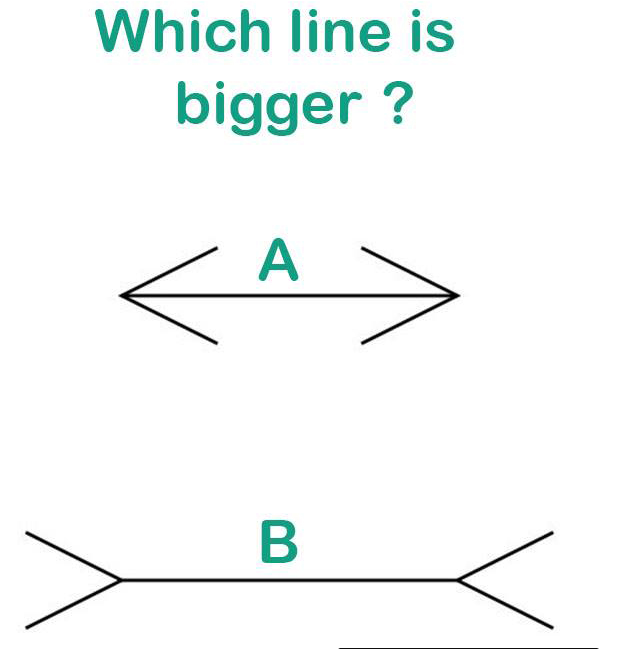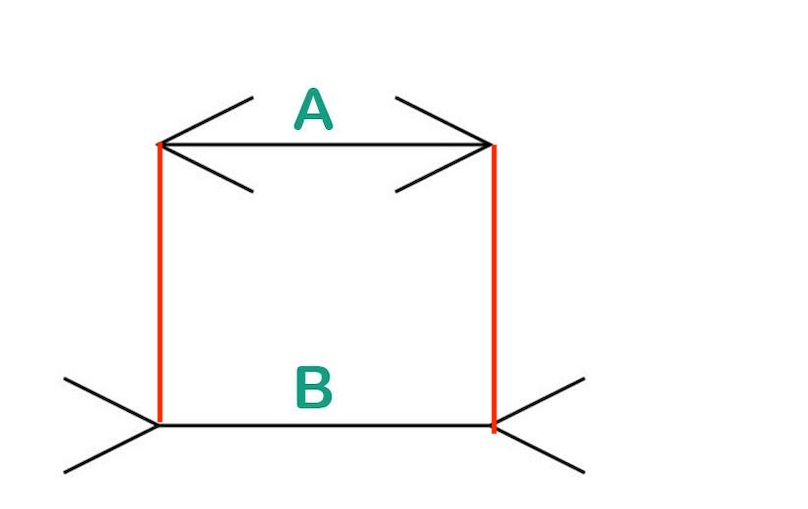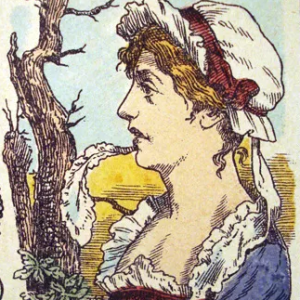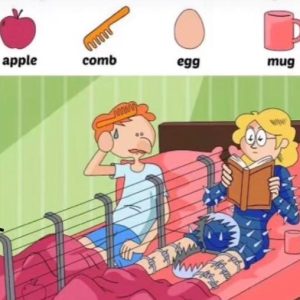Have you ever looked at something and sworn you knew what you saw, only to be proven completely wrong? Optical illusions play tricks on our brains, making us question what we think is reality. One of the most famous illusions that continues to stump people is the line length illusion, where two lines appear to be different sizes—when in fact, they are exactly the same.
So, take a look at the two lines in this puzzle. Which one is bigger? Line A or Line B? At first glance, most people instinctively believe that one is longer than the other. But don’t jump to conclusions just yet—your brain may be deceiving you!
Why Do Optical Illusions Trick Us?

Optical illusions work by manipulating how our brains interpret visual information. Instead of processing an image exactly as it is, the brain makes assumptions based on experience, perspective, and surrounding details. This is why illusions like the Müller-Lyer illusion—which is similar to this puzzle—can easily trick us.
Our brains process shapes, depth, and angles automatically, but sometimes that leads to false conclusions. In this case, the placement of the arrows at the ends of the lines creates a misleading impression, making one seem longer than the other.
Which Line is Bigger? A Closer Look
If you’re still unsure, let’s break it down step by step.
- Examine the Two Lines Carefully
Take a good look at both Line A and Line B. At first glance, one might appear longer, but that’s where the trick begins. - Pay Attention to the Arrows
Notice the way the arrows are placed at the ends of each line. Line A has arrows that extend outward, while Line B has arrows pointing inward. This creates a visual distortion that makes Line A seem longer. - Ignore the Arrows and Compare the Lines Themselves
If you remove the arrows from the equation, the lines are actually identical in length. The illusion occurs because our eyes perceive space differently depending on the direction of the arrows.
Why Do We Make This Mistake?
The illusion behind this puzzle is based on depth perception and how our brains process visual cues. Here’s why so many people get it wrong:
- Perspective Tricks the Brain – When arrows point outward, our brain interprets the space as “expanding,” making the line look longer. When arrows point inward, it appears “compressed,” making the line look shorter.
- Fast Thinking Leads to Errors – Our brains are wired to recognize patterns quickly, but sometimes that leads to misjudgments when we don’t take a second to analyze details.
- The Surrounding Context Matters – The background or nearby shapes can also influence how we perceive an image, reinforcing the illusion.
The Answer: Both Lines Are the Same Length

After careful observation, you’ll realize the truth—Line A and Line B are actually identical in size! The difference in appearance is entirely due to the placement of the arrows, which manipulate our perception.
If you’re still skeptical, try this simple test:
- Use a ruler to measure both lines.
- Cover the arrows with your hand and compare the lines again.
- Trace each line onto a separate piece of paper and compare them side by side.
No matter how you check, the lines will always be the same length!
How Optical Illusions Train Your Brain
While this puzzle might seem like just a fun challenge, it actually serves a greater purpose. Optical illusions like this one help improve cognitive skills, including:
- Attention to Detail – They encourage us to look beyond our first instinct and analyze information more carefully.
- Visual Processing Speed – The more we challenge our perception, the faster we can process complex images.
- Problem-Solving Abilities – Optical illusions teach us that things aren’t always as they seem, helping us develop critical thinking skills.
Keep Challenging Your Perception

Now that you’ve cracked this puzzle, why stop here? There are countless other mind-bending illusions out there that test how we see the world. Try exploring more visual puzzles, optical tricks, and brain teasers to train your mind and challenge your perception.
So, did this illusion fool you at first? Let us know what you thought, and share this challenge with others to see if they can figure it out too!


